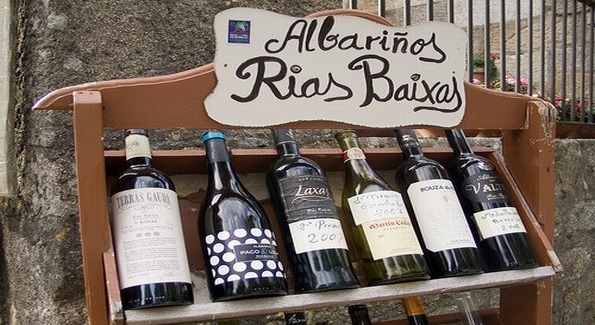Crisp Albariño from Spain’s Rias Baixas region hits the spot during these last fleeting weeks of warmer weather.
By Kelly A. Magyarics
If you’re like me, you’ve been reaching for some well-chilled bottles of light, crisp white wine during the heat spells we seem to keep getting. As much as I love spritzy, lemon-y Vinho Verde from Portugal, and zesty passion fruit- and grapefruit-tinged New Zealand Sauvigon Blanc, sometimes they can be a little one dimensional. So what’s an oenophile looking for a super summer sipper to do?
Chill a bottle of Albariño. This Spanish wine made from the grape of the same name is just the thing for the dog days (and nights) of summer. Equally quaffable with a full-on clambake as it is with grilled chicken kebobs, Albarino is chock full of aromas and flavors ranging from lemon, to peach and apricot, along with a refreshing line of acidity and a pleasing mineral finish. In short, it’s a perfect summer wine. And sommeliers and wine lovers have been taking notice over the past few years.
Albarino does have something working against it, however, and that is the fear of pronunciation of the cool, maritime region from which it hails; Rias Baixas. Say what??? Ok wine drinkers, say it with me: “ree-ahs buy-shuss.” Still having problems? Listen to this pronunciation guide. Rías Baixas is the birthplace of Albariño, producing its signature style.
On each bottle of wine from the region of Rías Baixas, you can find a quality control sticker guaranteeing the quality and authenticity of the wine (the D.O. was established in 1988, and fifty-six wineries sell their offerings in the U.S.)
Even if you still can’t remember how to pronounce the wine region, you can still find it on wine lists all over the District, including Jaleo and Café Atlantico. Juliana Santos, Wine Director for the Neighborhood Restaurant Group, is a huge fan, with Serra Da Estela on her lists at Columbia Firehouse in Alexandria for $10 a glass and $35 a bottle.
Here are a few to look for on store shelves. Most Albariño is sold in the $10-$22 range, making it an affordable option for experimentation:
Condes de Albarei Salneval Albariño ($9.99)
Light straw color, honey pear and tropical fruit nose, and a slight mineral component. It’s racy and zesty with citrus and floral notes, yet soft and round at the same time.
Torre la Moreira Albariño($17.00)
Pale straw yellow with green reflections, and intense and complex nose with subtle aromas of fleshy white fruit, apples and pears, and aromatic herbs. Fruity,with a good balance of acidity and sweetness.
Persistent finish.
Serra da Estrela Albariño ($15.99)
Straw yellow with green reflections. Intense, rich aromas, with hints of apricot, pear and ripe exotic fruits, lemon-lime vibrancy, and floral notes. Persistent on the palate,with vegetable notes and fresh acidity.
Though mouthwateringly crisp and refreshing, Albarino wines also tend to have a touch of roundness, which makes them perfect partners with a wide range of dishes and cuisines. Enjoy them with seafood, shellfish, Asian cuisine and all by themselves as a cocktail wine. For something a bit off the beaten path, drink Albariño alongside barbequed ribs that have a sweet, slightly spicy tomato-based sauce.
One note, however. Just as the summer days are fleeting, so is Albariño’s freshness. Drink them young, which they are still vibrant and zingy.
Kelly Magyarics is a wine and spirits writer, and wine educator, in the Washington, DC area. She can be reached through her website, www.kellymagyarics.com, or on www.twitter.com/kmagyarics.






